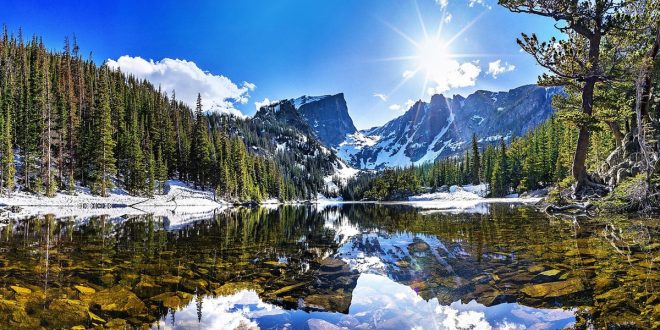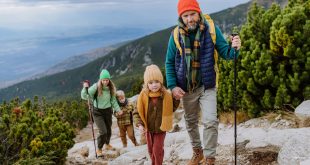Patagonia, a vast and remote region at the southernmost tip of South America, is a dream destination for any avid hiker. This region spans both Argentina and Chile, offering a landscape like no other, with jagged mountain peaks, expansive glaciers, dense forests, and crystal-clear lakes. As someone who has had the privilege to hike in Patagonia, I can tell you that the experience is nothing short of life-changing. Hiking in Patagonia allows you to explore some of the most awe-inspiring terrain in the world, providing an unforgettable adventure in the wildest part of the continent.
In this article, I’m excited to share my personal experiences with you—some of the best hikes in Patagonia, what to expect on the trails, and how to prepare for this extraordinary adventure.
Why Hiking in Patagonia Should Be on Your Bucket List
Hiking in Patagonia is not just about the trails—it’s about immersing yourself in a land that feels as though it’s been untouched by time. The rugged beauty here is jaw-dropping; from towering mountains to sprawling glaciers, the region offers a variety of landscapes that are as diverse as they are stunning. What makes it even more magical is the sense of isolation that comes with exploring such a remote corner of the world. You’ll often find yourself walking through valleys where the only sound you hear is the wind rustling through the trees or the crunch of your boots on the trail.
For me, the real charm of Patagonia is its wild, untamed nature. It’s a place where the elements are unpredictable, and where you can feel both the power and the serenity of the earth. Hiking here is not only about challenging your body; it’s also a mental and emotional journey. Whether you're standing at the base of the towering Torres del Paine or gazing across the vast expanse of the Southern Patagonian Ice Field, it’s impossible not to be moved by the raw beauty surrounding you.
Exploring Torres del Paine National Park: A Hiker’s Paradise
One of the crown jewels of Patagonia is Torres del Paine National Park in Chile. This UNESCO World Biosphere Reserve is a paradise for hikers, boasting some of the most scenic trails in the world. I had the opportunity to hike here, and the experience is something I’ll never forget.
The W Trek: A Trail of Wonders
The W Trek is perhaps the most well-known hiking route in Torres del Paine, and for good reason. The trail’s name comes from its distinctive "W" shape when viewed from above, and it covers a variety of terrains, from forests to glaciers to alpine meadows. I spent five days traversing this trail, and every single day was an adventure.
The W Trek is broken into manageable sections, making it accessible for most hikers. I found myself waking up every morning to fresh, crisp air and stepping into some of the most beautiful landscapes I’ve ever seen. The trek’s highlights include the famous Torres (three granite spires), the French Valley with its awe-inspiring views of hanging glaciers, and the Grey Glacier, where massive chunks of ice calve into the frigid waters below.
This trek is a perfect introduction to Patagonia’s wilderness, as it provides a variety of landscapes and challenges, but without being overly strenuous. Still, it’s important to prepare for unpredictable weather—winds can gust fiercely, and rain is always a possibility. I always made sure to pack my rain gear and wear layers to stay comfortable.
The O Circuit: A Longer, More Remote Option
For those who want to delve deeper into the wilderness, the O Circuit is an excellent choice. It’s a longer and more demanding hike that circles the entire park, offering unparalleled views of Torres del Paine’s remote corners. The O Circuit usually takes 7-10 days to complete and provides a more isolated experience than the W Trek.
I found the O Circuit to be a more challenging, yet incredibly rewarding adventure. The trail takes you through rugged terrain and remote valleys, where you might not see many other hikers. It’s a true wilderness experience, and the isolation only added to the allure. The opportunity to see Torres del Paine from different angles and experience the quiet serenity of less-traveled paths is what made the O Circuit special.
Los Glaciares National Park: Argentina’s Untouched Beauty
While Chile’s Torres del Paine is often the first place that comes to mind for Patagonia hiking, Argentina’s Los Glaciares National Park is just as stunning and deserving of attention. Located near the town of El Calafate, Los Glaciares is home to some of Patagonia’s most iconic landmarks, including the mighty Mount Fitz Roy and the Perito Moreno Glacier.
Laguna de los Tres: The Perfect Day Hike
One of the highlights of Los Glaciares is the Laguna de los Tres trail, which offers spectacular views of Mount Fitz Roy. The trail is approximately 12 miles round-trip, with an elevation gain of about 2,300 feet, making it a moderate to challenging hike. Along the way, you’ll pass through forests, meadows, and rocky terrain, and as you near the lake, the views of Fitz Roy become even more breathtaking.
The hike to Laguna de los Tres was one of the most rewarding I’ve ever done. As I reached the lake and looked out at the majestic peak of Fitz Roy rising above, I felt completely in awe of the landscape. The turquoise waters of the lake, the jagged granite spires of Fitz Roy, and the surrounding glaciers created a scene that was nothing short of magical. If you’re in the area, this hike is an absolute must-do.
Laguna Capri: A Shorter but No Less Stunning Option
If you’re looking for a shorter hike but still want to experience the beauty of the Fitz Roy region, the Laguna Capri trail is a great option. This 6-mile round-trip hike offers stunning views of Fitz Roy and its surrounding peaks. It’s a relatively easy hike, with an elevation gain of just over 1,000 feet, making it ideal for a day hike.
Many hikers opt to camp at Laguna Capri, and I can’t recommend this enough. Spending the night by the lake and waking up to the sight of Fitz Roy bathed in the soft morning light is an experience I will always cherish. The views from Laguna Capri are simply some of the best in Patagonia.
Tips for Hiking in Patagonia
Hiking in Patagonia can be challenging, especially for those unaccustomed to remote or rugged environments. However, with the right preparation, you can make the most of your trip. Here are a few tips based on my own experiences:
Be Prepared for the Elements
The weather in Patagonia is notoriously unpredictable. I experienced rain, wind, and sunshine all in a single day on more than one occasion. It’s important to pack for all seasons. Waterproof gear, layers, and sturdy hiking boots are essential. Make sure to bring enough clothing to stay warm, especially if you plan to hike for several days.
Stay Hydrated and Nourished
Since many of Patagonia’s trails take you into remote areas, you’ll need to carry sufficient water and food. I always made sure to bring enough snacks to fuel me through the day, and I used a water filter to refill from streams and lakes along the way.
Respect the Wilderness
Patagonia is one of the most pristine places on earth, and it’s our responsibility to help preserve its beauty. Always stick to marked trails, pack out all your waste, and follow Leave No Trace principles. By being mindful of the environment, you’ll ensure that this magnificent region remains preserved for future generations.
Final Thoughts
Hiking in Patagonia is a journey like no other, offering an unparalleled opportunity to experience the raw, untouched beauty of the earth. Whether you’re traversing the famous W Trek in Torres del Paine or hiking through the stunning landscapes of Los Glaciares National Park, the trails in Patagonia promise adventure, challenge, and unforgettable views. For anyone with a love for the outdoors, hiking in Patagonia should be at the top of your list—it’s an experience that will stay with you forever.
 Best Hiking Gear Hike More, Worry Less
Best Hiking Gear Hike More, Worry Less

